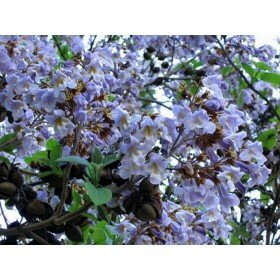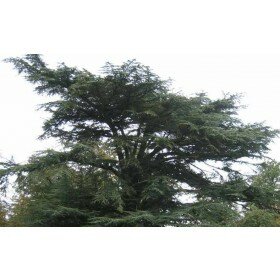Sign up to get notified when this product is back in stock
Details
- Description
-
Details
Pterocarpus santalinus, Almug seeds
Pterocarpus santalinus belongs to the family of the Fabaceae. P. santalinus is native to India where it is endemic. It is also known as Red Sandalwood. In the bible it was already mentioned under the name “Almug”.
P. santalinus grows as a small tree that reaches a height of about 5 to 8 m. Its trunk can get 50 to 150 cm in diameter.
The leaves are dark green and pinnate. A leaf is built up of 3 leaves. 2 leaves are a little smaller and stand vis-à-vis. The leaf at the end is a little bigger. The whole composed leaf is 10 to 18 cm long. The venation is clearly visible.
The flowers are 2 cm small and are clustered in inflorescences the spikes. The fruit has wings and is distributed with the wind. The fruit contains 1 or 2 seeds. The seeds are reddish to brownish and look like a kindney. They get 1 to 1, 5 cm long.
The Sandalwood is a very popular wood. This is a fact which is not good for the populations of P. santalinus that get strongly exploited. P. santalinus is classified as an endangered species. The wood is used for furniture. Furthermore P. santalinus delivers a red colorant that is used to color tea and medicaments. In former times it was used to color textiles.
In medicine the wood is used against skin irritation and inflammations as well as against headache. Because of its very pleasant smell the wood is used as incence.
CultivationP. santalinus does not tolerate frost. At a temperature under 0°C it dies. During winter time it should be placed somewhere inside.
The seeds of P. santalinus should be put into warm water for 12 h before planting. Afterwards the seeds can be put 1 cm deep into the substrate. At a temperature of about 20°C and constant moisture, germination occurs after 10 to 12 weeks.
P. santalinus should be placed warm, light and sunny. - Additional Information
-
Additional Information
color No - Reviews
-












